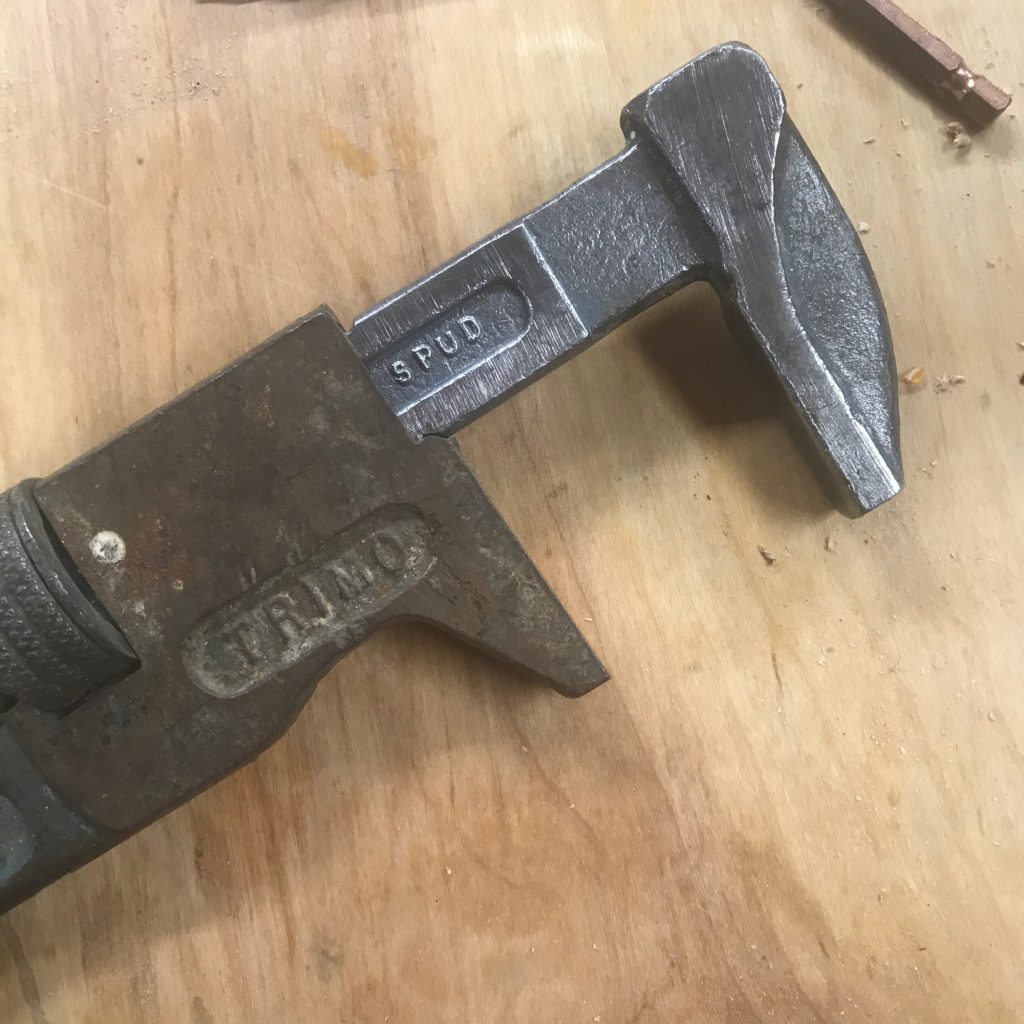Dabbling in tool restoration…
I’ve been watching too many YouTube views lately about tool restoration, and as part of my ongoing efforts to equip my home workshop with more tools it means I’ve been hitting more garage sales and picking up a lot more tools which are coated in ferric oxide, and then doing various things to them to return them to working condition. I’ve cleaned up some augers, a couple of crescent wrenches, rusty pliers, screwdrivers, and even a set of four Stanley planes.
Last week, I got a pretty nifty wrench out of a junk pile for just a couple dollars:

I hit the jaw with a wire sheel to try to get the worst of the rust off instead of using the more gentler Evaporust treatment that I have been using before. It was a bit aggressive, and put some scratches into the flat surfaces, but works a lot quicker. The picture above shows the work in progress, with the body of the wrench still untouched, but the jaw worked for just a few minutes on the wire wheel in my 8″ bench grinder. A few minutes with some 120 and 220 grit sand paper will take out most of those scratches, and leaves the wrench looking pretty nice.
I’ll post a picture when its all cleaned up.
But in any case, one of the things I’ve been interested in is “japanning”. That is the dense intensely black and somewhat glossy black coating on internal surfaces of many old planes. Most of the time, the japanning on old planes is still in remarkably good condition, even a century or more after being created. I wondered what this mysterious material was, and could it be duplicated in the modern workshop. For instance, to finish the wrench above, I thought about perhaps applying that to the inset “TRIMO” and “SPUD” logo (maybe with added white enamel lettering).
And, it turns out, it is possible. This video on Hand Tool Rescue details the material and process that you need to go through.
I thought I’d bookmark this, and at some point in the future I might give it a whirl (particularly if I can find a junk sale toaster oven to do the baking part).
Hope you all are having a good day.
I recall burning three or four weeks of a sabbatical getting Saccade.com on the air with Wordpress. So much tweaking…